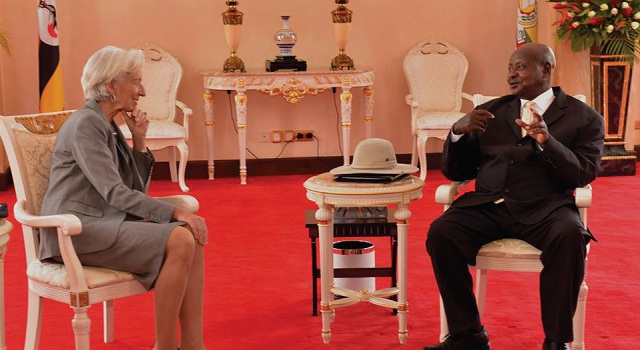
For instance, he said, the price of fuel has gone up, people have reduced their fuel intake, so the tax collected automatically goes down.
He also said that while the internal resources are dwindling, government appears unready to reduce expenditure, instead they prefer to keep borrowing and to make matters worse on a short term basis.
“Financial management is tough,” Muhumuza said, “If you take a wrong turn, it is hard to correct things. And we appeared to have taken a wrong turn when we decided to borrow extensively for long term infrastructure there by accumulating debt with high interest which we are now struggling to pay.”
Economist Ramadhan Ggoobi, who has severally interacted with various IMF delegations to Uganda, largely agrees with Muhumuza. But he doesn’t think the IMF’s approach can help any more.
“When you see the way things are done here,” Ggoobi said, “the IMF’s reliance on carrots no longer works. I do not think they still have the teeth to bite. With other windows for multilateral and bilateral access to credit, the government no longer cares about the IMF.”
Only Bank of Uganda (BoU), Ggoobi said, is still listening to them on the monetary side. But even there, the gains of the Central Bank are easily eroded by government.
For instance, Ggoobi explained that while the Central Bank has been trying to ease monetary policy to bring down interest rates and enable the private sector access affordable credit, now you have government coming in with a demand of Shs800 billion, 40% of the Shs.2 trillion of available credit.
“Now the banks will get excited again, interest rates will go up again,” Ggoobi said, “That is the problem. Monetary policy is not coordinated with fiscal policy.”
The economist claims that the kind of fiscal indiscipline seen today is reminiscent of the 1990s.
“The kind of borrowing Uganda is doing today,” Ggoobi said, “Uganda was not doing five years ago. In our situation, you need both the stick and the carrot. You saw when the World Bank pulled out a stick,” Ggoobi said, “we acted.”
He was referring to a decision by the World Bank in 2016 to suspend lending to Uganda of $1.5 billion (Shs 5 trillion) bringing to a grinding halt implementation of key development projects including in the critical education sector. World Bank financing is critical to Uganda. In the financial year 2014/15, for instance, 57% of Uganda’s external debt was from the World Bank.
“That is why in my view,” Ggoobi said, “the IMF needs to revise strategy. They need to look for more kind of explicit sanctions,” the economist said.
But for now, the IMF has tended to stop at caution.
In their last statement, which came out last year, Tao Zhang, the deputy managing director and Acting Chair of IMF’s Executive Board, a body that runs the IMF, noted that macroeconomic performance in Uganda has been sound and that performance under the PSI has been “broadly satisfactory”.
While the FY17/18 budget targets a further revenue increase, Zhang noted, specific measures have yet to be identified.
“The tight current spending envelope will require strong expenditure controls and efficiency gains to avoid the need for supplementary budgets or renewed domestic arrears,” Zhang added, “Social spending would decline in real terms and relative to EAC peers, requiring efficiency gains to protect the level of service delivery.”
He also noted that safeguarding debt sustainability necessitates continued domestic revenue mobilization and sound project implementation to realize the envisaged growth dividend from infrastructure investment. “The authorities should target the projected debt trajectory as a fiscal anchor,” Zhang added.
The IMF also noted that the implementation of the FY16/17 budget was mixed.
They noted that while revenue increased by about ½ percent of GDP, recurrent expenditures exceeded program projections by about the same percent of GDP.
 The Independent Uganda: You get the Truth we Pay the Price
The Independent Uganda: You get the Truth we Pay the Price



